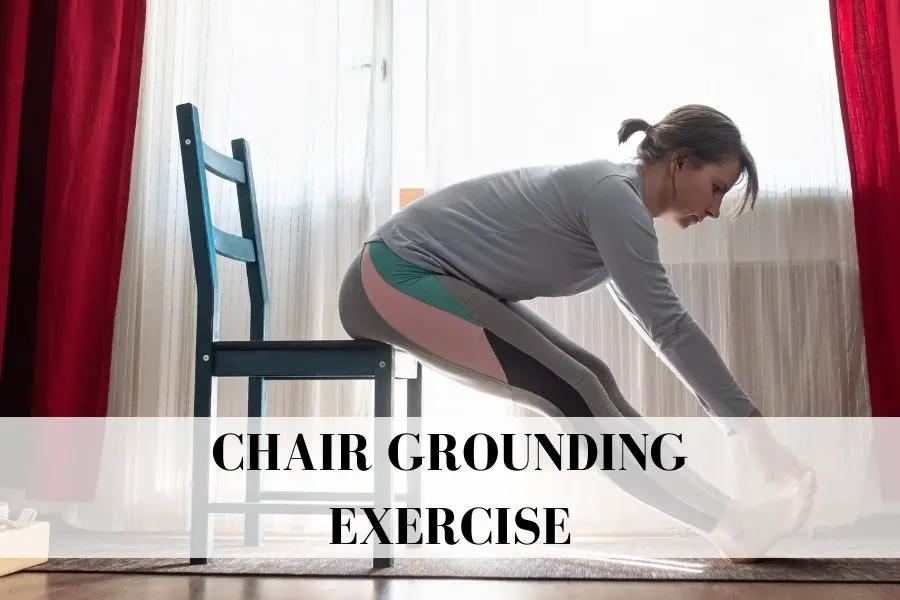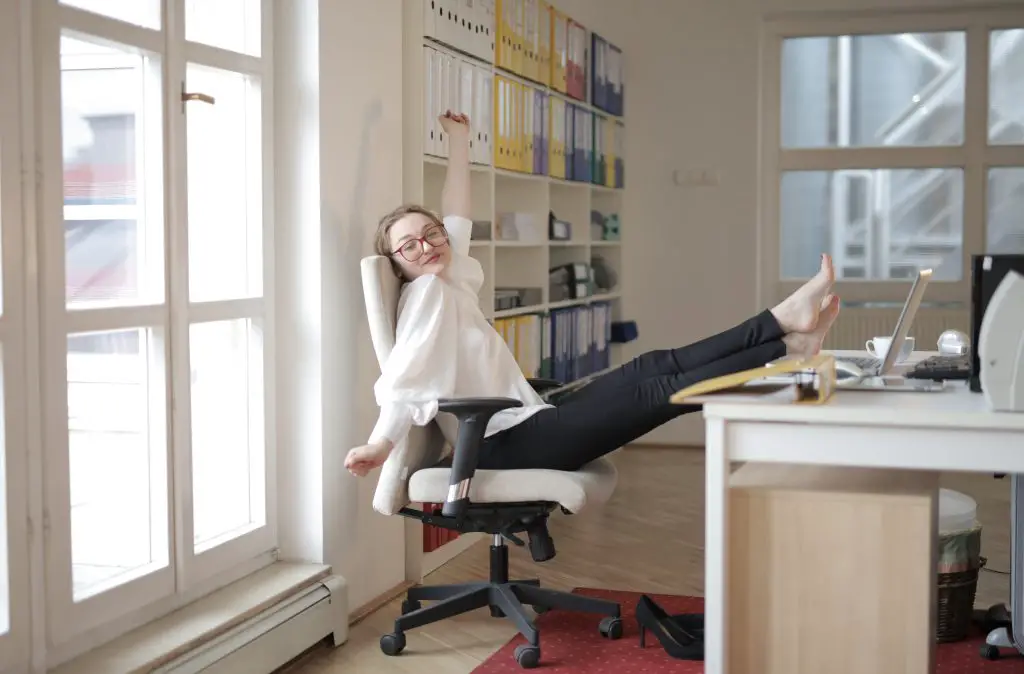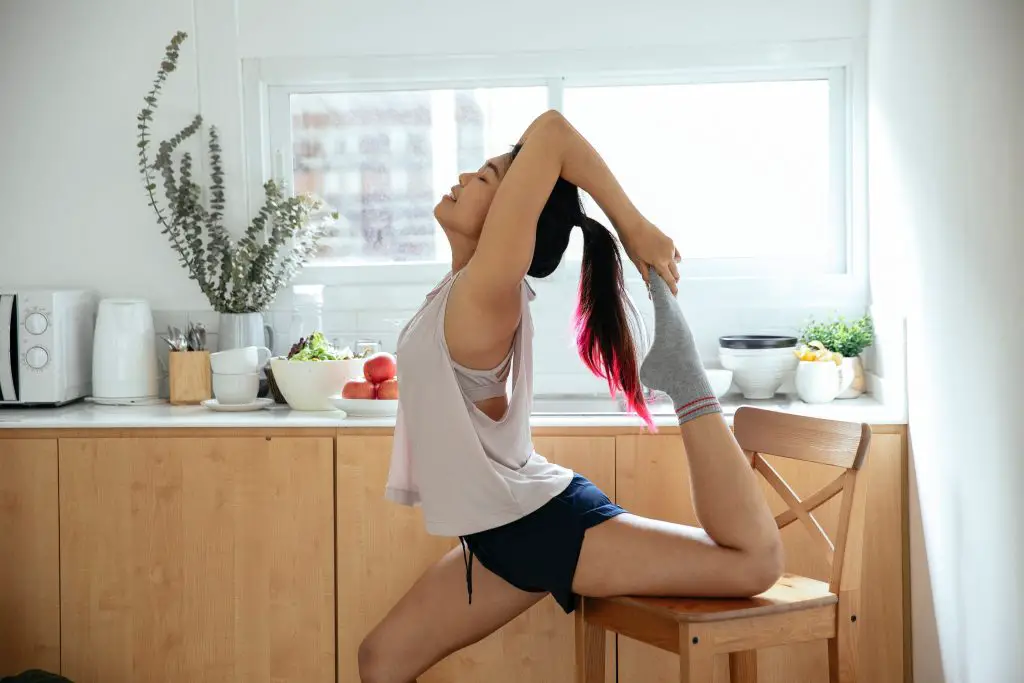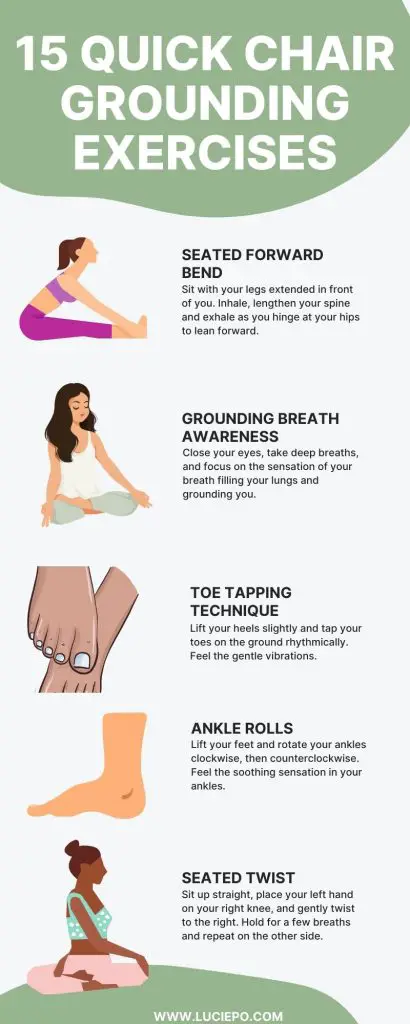
15 Quick Chair Grounding Exercise: Grounding Techniques For Instant Calm and Stability
Hey there, lovely reader!
Are you ready to step into a realm of instant calm and stability, right from the comfort of your chair?
This article is all about introducing you to the magic of chair grounding exercises, a potent tool to ground yourself amidst life’s hustle and bustle.
So, what’s in store for you?
Picture quick and effective techniques that bring instant calm and stability to your day, right from the comfort of your chair. That’s precisely what we’re exploring!
These exercises are designed to be accessible, providing you with a reliable toolkit for finding your center.
Let’s explore how these techniques can become your go-to for a quick reset, all from the ease of your chair.

What is Grounding
Ever felt like life’s whirlwind is carrying you away? Grounding is like throwing out an anchor, bringing you back to the present moment. It’s a technique that helps you reconnect with reality when stress or anxiety starts to pull you in too many directions. Here’s a quick rundown:
- Connecting with the Present: Grounding is all about being present, right here, right now.
- Engaging Your Senses: It involves using your senses to anchor yourself in the current moment.
- An Anchor in Chaos: It’s like a lifeline that keeps you steady, especially during hectic times.
- Calming the Mind: Grounding helps quieten the mental chatter and promotes a sense of inner peace.
The Power of Chair Grounding Exercises
Incorporating chair grounding exercises into your routine can work wonders for your well-being. Let’s break down why they’re so effective:
- Accessible Anytime, Anywhere: Whether you’re at home, work, or anywhere in between, a chair is usually within reach.
- Quick Stress Relief: These exercises offer swift relief, making them perfect for busy schedules or moments of tension.
- Physical Stability, Mental Calm: By grounding your body, you’re also grounding your mind, creating a sense of stability.
- Promotes Mindfulness: They encourage you to be present, fostering a sense of mindfulness in your day-to-day life.
- Simple Yet Effective: Chair grounding exercises don’t require any special equipment or extensive training. Anyone can do them!
Benefits of Chair Grounding Exercises
Embracing chair grounding exercises comes with a host of advantages, tailored to enrich your well-being:
- Eases of Physical Tension: They target areas of physical tension, providing relief and relaxation.
- Boosts Mental Clarity: Grounding exercises can clear mental fog, helping you think more clearly.
- Enhances Emotional Stability: By centering yourself, you’re better equipped to handle challenging emotions.
- Improves Posture: Engaging in these exercises can promote better posture, benefiting your overall physical health.
- Encourages Mindful Breathing: Many chair grounding exercises involve conscious breathing, fostering mindfulness.
- Facilitates Stress Management: They serve as powerful tools for managing stress in everyday life.
- Promotes a Sense of Control: Grounding techniques empower you to take charge of your mental and emotional state.
How To Perform Chair Grounding Exercises
Ready to dive into these simple yet effective techniques?
Here’s how you can get started with chair grounding exercises:
Seated Forward Bend
Sit with your legs extended in front of you. Inhale, lengthen your spine and exhale as you hinge at your hips to lean forward.
Grounding Breath Awareness
Close your eyes, take deep breaths, and focus on the sensation of your breath filling your lungs and grounding you.
Toe Tapping Technique
Lift your heels slightly and tap your toes on the ground rhythmically. Feel the gentle vibrations.
Ankle Rolls
Lift your feet and rotate your ankles clockwise, then counterclockwise. Feel the soothing sensation in your ankles.
Body Scan Meditation
Starting from your toes, scan up through your body, paying attention to any sensations or areas of tension.
Gentle Neck Rolls
Gently tilt your head to the right, allowing your right ear to approach your right shoulder. Slowly roll your head in a circle.
Seated Twist
Sit up straight, place your left hand on your right knee, and gently twist to the right. Hold for a few breaths and repeat on the other side.
Shoulder Rolls
Sit up straight and roll your shoulders in a circular motion, first forward, then backward.
Leg Lifts
Sit at the edge of your chair and extend your legs. Lift them a few inches off the ground and hold for a few seconds.
Foot Flex and Point
Lift your feet off the ground and alternate between pointing your toes and flexing them back.
Chest Opener
Clasp your hands behind your back and straighten your arms. Lift your chest and open your shoulders.
Progressive Muscle Relaxation
Tense and relax each muscle group in your body, starting from your toes to your head.
Seated Cat-Cow Stretch
Sit up straight and place your hands on your knees. Inhale and arch your back (Cow), lifting your chest and chin. Exhale and round your back (Cat), tucking your chin to your chest.
Shoulder Blade Squeeze
Sit with your arms by your sides. Inhale and squeeze your shoulder blades together, opening your chest. Exhale and release.
Chair Tree Pose
Place the sole of your foot on the inner thigh of the opposite leg, finding your balance.
Tips for Effective Practice
These practical insights are designed to enhance your experience and bring you a greater sense of calm and stability. Let’s dive in!
- Choose a Quiet Space: Find a peaceful area where you won’t be disturbed, allowing you to fully focus on the grounding experience.
- Set an Intention: Before you begin, set a positive intention or affirmation. This helps guide your practice and enhances the benefits.
- Comfortable Seating: Ensure your chair is comfortable and supportive. Your feet should rest flat on the ground, and your back should be well-supported.
- Natural Breathing: Allow your breath to flow naturally. Avoid forcing it; instead, simply observe its rhythm.
- Maintain Present-Moment Awareness: Keep your attention in the present moment. Notice the sensations in your body and the connection with the chair.
- Listen to Your Body: If any exercise feels uncomfortable or causes strain, adjust or skip it. Your comfort and safety come first.
- Gradual Progression: Start with exercises that feel most comfortable, then gradually introduce more complex ones as you feel ready.
- Stay Consistent: Practice regularly, even if it’s just for a few minutes each day. Consistency helps reinforce the grounding benefits.
- Integrate Grounding into Daily Life: Apply grounding techniques outside of your practice sessions. Use them when you feel stressed or anxious.
- Practice Mindfulness: Cultivate mindfulness by being fully present in each exercise. Let go of distractions and be in the moment.
- Reflect and Journal: After each session, take a moment to reflect on your experience. Consider jotting down your thoughts in a journal.

Common Mistakes to Avoid
In any practice, it’s not uncommon to encounter a few hiccups along the way. Chair grounding is no exception.
Let’s explore some common missteps that can occur and how to steer clear of them. By being aware of these potential pitfalls, you can make the most of your grounding experience.
- Rushing the Process: Avoid hurrying through the grounding exercise. Take your time to fully immerse yourself in the experience.
- Neglecting Consistency: Inconsistency can hinder the effectiveness of chair grounding. Try to make it a regular part of your routine.
- Overcomplicating the Exercise: Keep the grounding exercise simple and intuitive. It’s about finding what resonates with you, so don’t overthink it.
- Not Tailoring to Your Needs: Chair grounding is highly adaptable. Ensure the exercise aligns with your preferences and comfort level.
- Forgetting Mindfulness: Stay present during the exercise. Avoid distractions and focus on the sensations and emotions they evoke.
- Skipping Reflection: Neglecting to reflect on the grounding experience in your journal can miss an opportunity for deeper self-awareness.
- Expecting Immediate Results: Like any practice, the benefits of chair grounding may take time to fully manifest. Be patient with yourself.
- Ignoring Discomfort: If a specific grounding technique causes discomfort, adjust or choose an alternative method that suits you better.

Somatic Breathwork Training and Chair Grounding
Bringing together somatic breathwork training and chair grounding introduces a dynamic duo for your well-being toolkit. These practices complement each other in remarkable ways, offering a synergistic approach to inner balance and serenity.
You might like my blog post about Somatic Breathing Exercises
Let’s delve into how the combined power of breathwork and grounding can lead you to deeper states of tranquility and self-awareness.
- Complementary Practices: Somatic breathwork training and chair grounding go hand in hand, offering a powerful combination for holistic well-being.
- Enhanced Awareness: Integrating breathwork with chair grounding amplifies your self-awareness, helping you tap into deeper layers of relaxation and calm.
- Breath as an Anchor: Utilize your breath as an anchor during chair grounding. It provides a steady rhythm, grounding you in the present moment.
- Balanced Energy Flow: Somatic breathwork encourages a balanced flow of energy through your body, aligning perfectly with the stabilizing effects of chair grounding.
- Stress Release Amplification: When paired, these practices work synergistically to amplify stress release, providing a heightened sense of tranquility.
- Mind-Body Connection Deepening: Somatic breathwork and chair grounding work in tandem to strengthen the connection between your mind and body, fostering a profound sense of unity.
- Empowering Self-Regulation: The combination empowers you to regulate your emotions and responses, enabling a more centered and empowered state.
Additional Resources
Exploring further resources can greatly enrich your grounding and breathwork journey.
Below, you’ll find a curated list of books, apps, and communities that offer valuable insights and support. These resources are like compasses guiding you toward a deeper sense of calm and stability.
Feel free to explore and discover what resonates best with you.
- Recommended Reading: Dive deeper into the world of grounding and breathwork with these insightful books:
- “The Power of Now” by Eckhart Tolle
- “Waking the Tiger: Healing Trauma” by Peter A. Levine
- “Breathe: The Simple, Revolutionary 14-Day Program to Improve Your Mental and Physical Health” by Belisa Vranich
- Mindfulness Apps: Elevate your mindfulness practice with these user-friendly apps:
- Online Communities: Connect with like-minded individuals and share your journey in these supportive online communities:
- Reddit’s r/Mindfulness
- Facebook Groups like “Mindful Living Community”
- Guided Meditations: Immerse yourself in soothing guided meditations for relaxation and grounding:
Frequently Asked Questions
How often should I practice chair grounding exercises?
Ideally, aim for a few minutes daily, especially during high-stress moments. However, feel free to adjust based on your own needs.
Can I do these exercises anywhere?
Absolutely! Chair grounding exercises are incredibly versatile and can be done in various settings – at home, in the office, or even during travel.
What if I have mobility issues?
No worries! These exercises are designed to be accessible. If you have specific concerns, consult with a healthcare professional for personalized guidance.
Can I combine chair grounding with other relaxation techniques?
Definitely! Combining chair grounding with practices like deep breathing or visualization can enhance its effectiveness.
How long does it take to feel the benefits?
Some may feel instant relief, while for others, it may take a few sessions. Consistency is key, so keep practicing!
Resources
THE EFFECTS OF ADDING A SOMATIC INTERVENTION TO THE GESTALT TWO-CHAIR TECHNIQUE ON CAREER DECISION-MAKING – ProQuest. (n.d.). https://www.proquest.com/openview/10f050df93af11f9a21bf46c42314b87/1?pq-origsite=gscholar&cbl=18750&diss=y
Get Fit While You Sit. (n.d.). Google Books. https://books.google.cz/books?hl=en&lr=&id=MFJ3geQEErcC&oi=fnd&pg=PA1&dq=Chair+grounding+exercises&ots=tePdAohj6e&sig=Pgz2W1arSZFOUcZCrM6amKuXcNc&redir_esc=y#v=onepage&q&f=false
Treatment, C. F. S. A. (n.d.). Exhibit 1.4-1, Grounding Techniques – Trauma-Informed Care in Behavioral Health Services – NCBI Bookshelf. https://www.ncbi.nlm.nih.gov/books/NBK207188/box/part1_ch4.box5/?report=objectonly
PharmD, J. C. (2023, February 14). Grounding techniques: Step-by-step guide and methods. https://www.medicalnewstoday.com/articles/grounding-techniques
Healthline. (n.d.). Healthline. https://anon.healthline.com/






